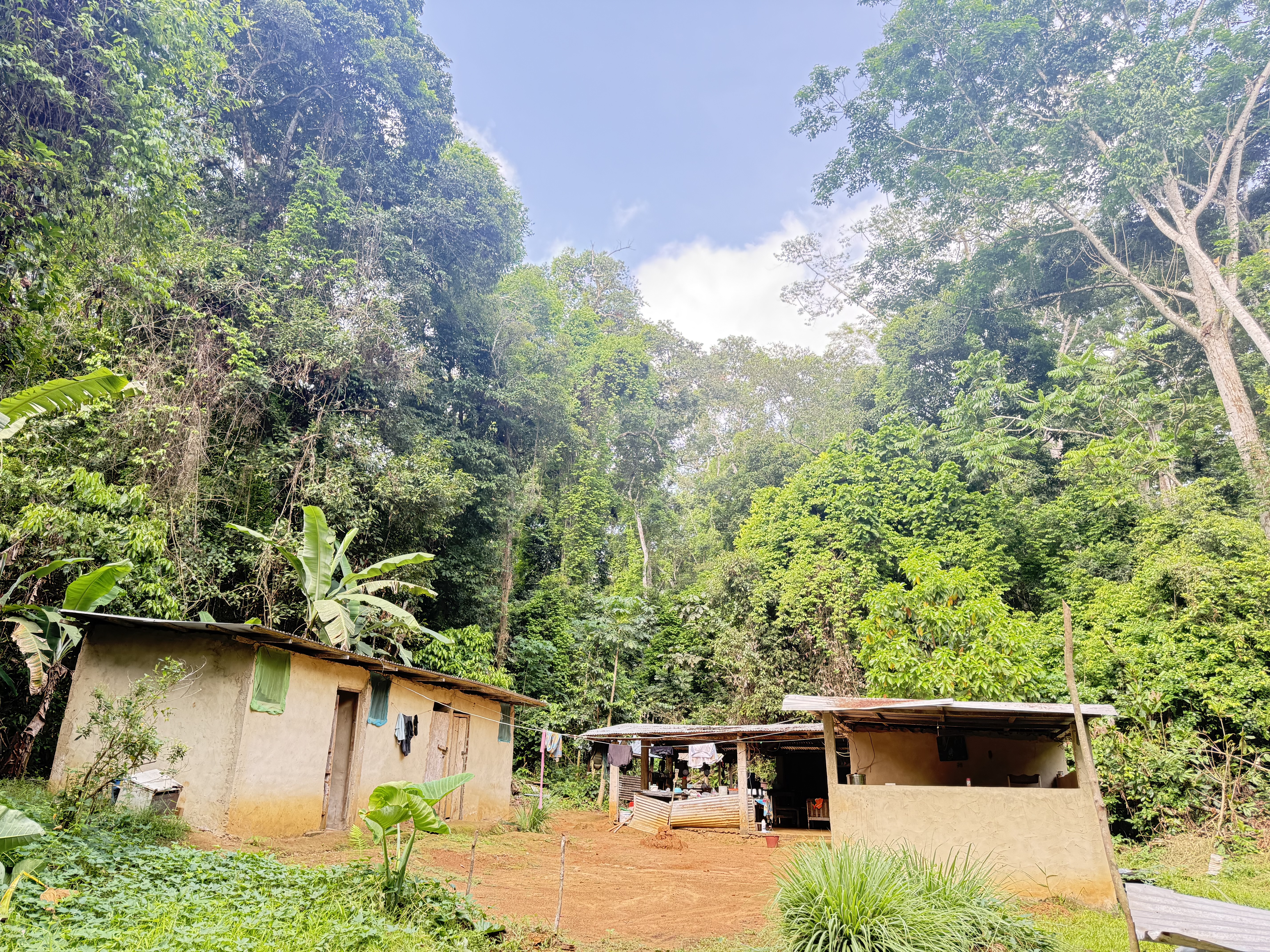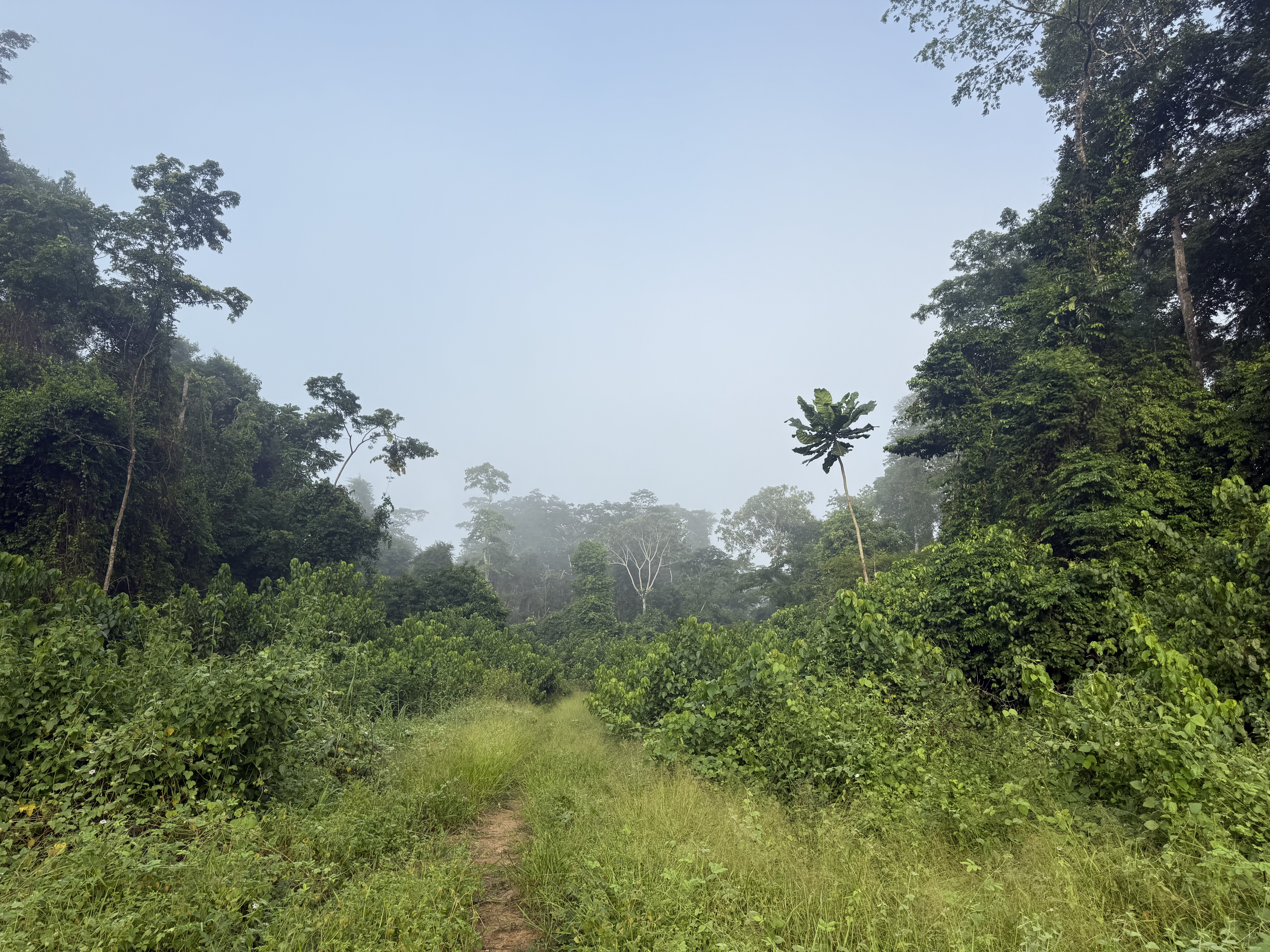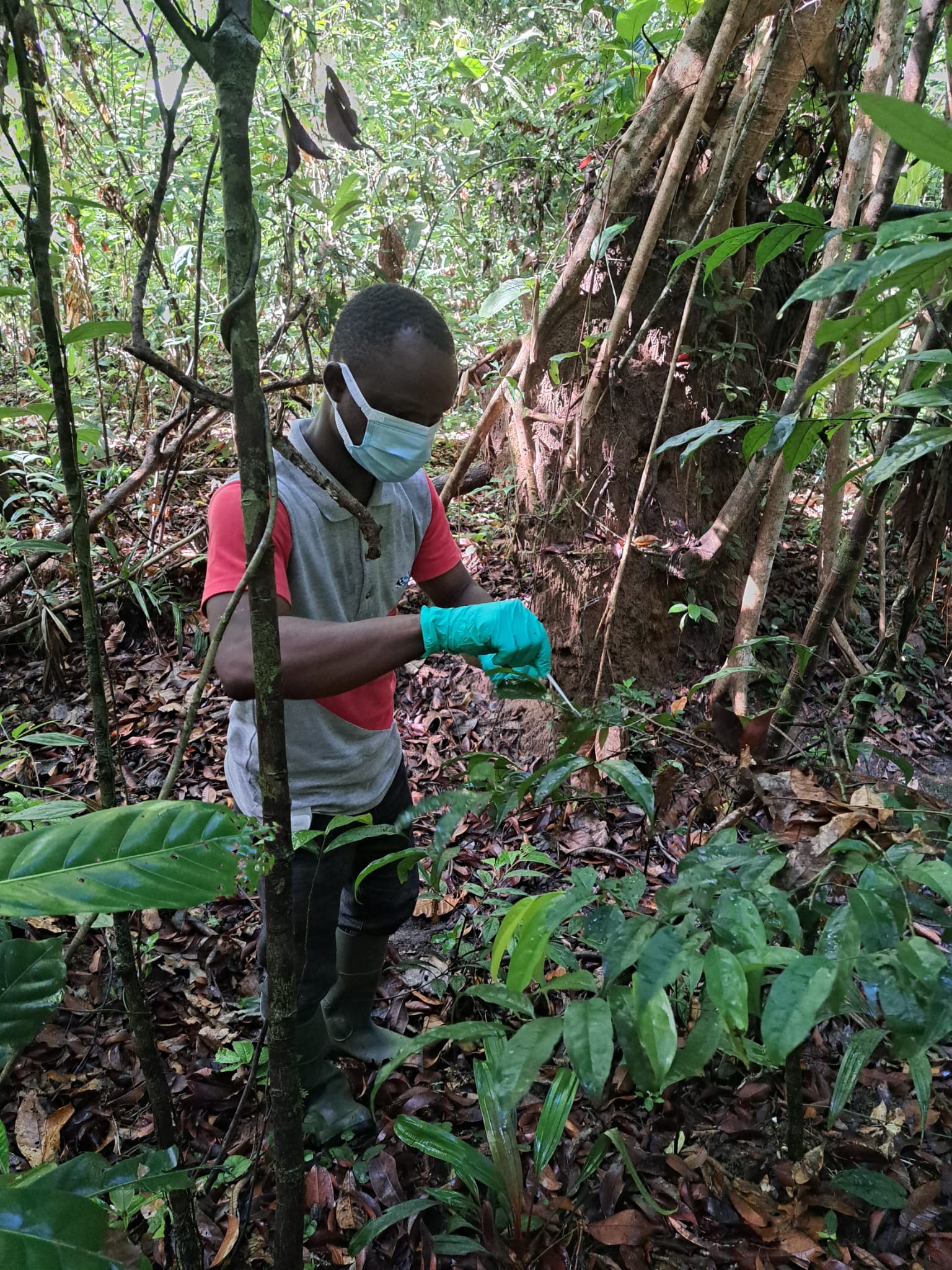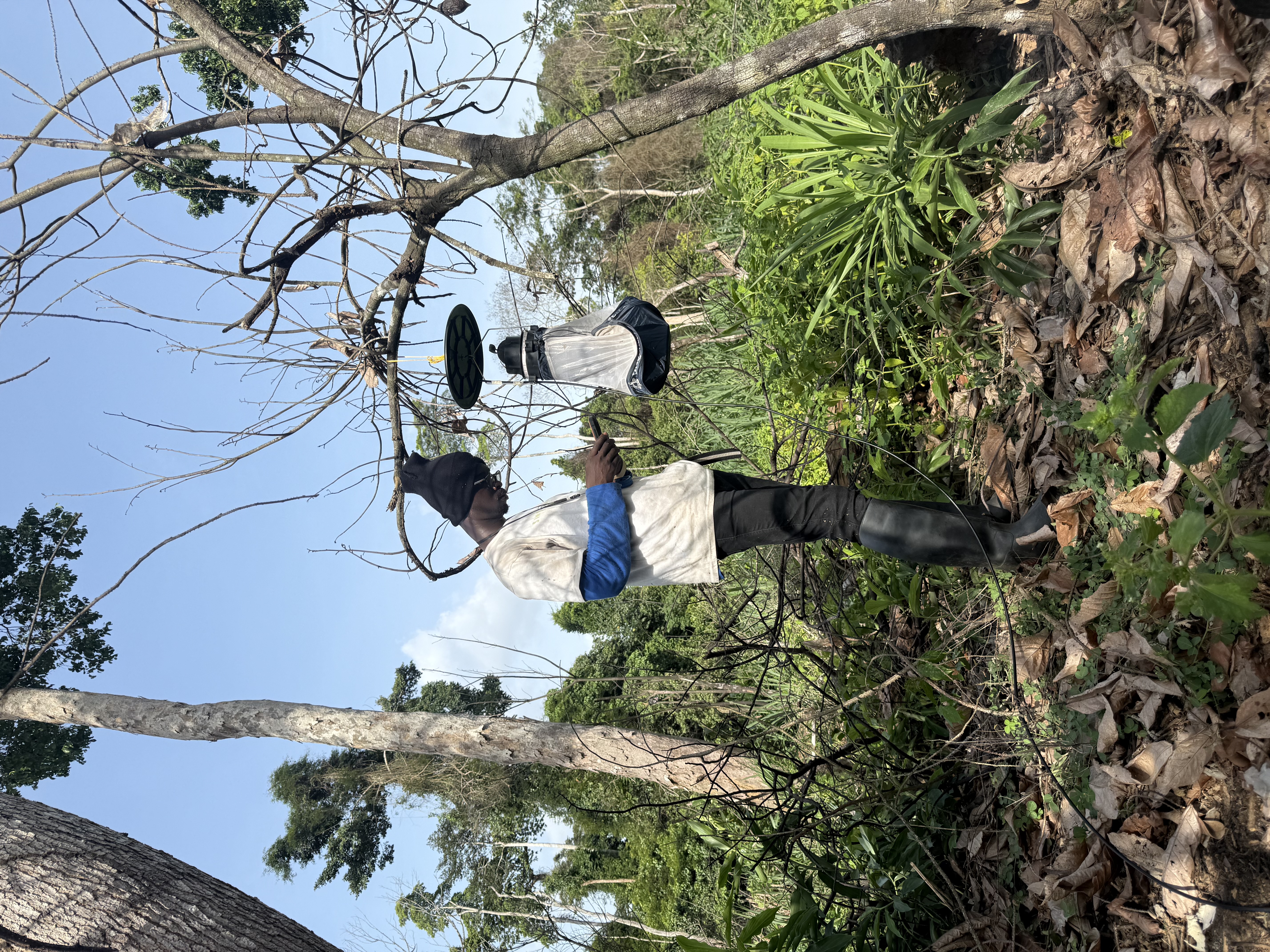Field Diaries: Tracking Mosquitoes, DNA, and Biodiversity in Côte d’Ivoire

One of five different camps at the Taï National Park Fieldsite © Dimov/HIOH
In the lush Afrotropical rainforests of Côte d’Ivoire, a team from the Helmholtz Institute for One Health (HIOH) is investigating how restoring tropical forests can influence biodiversity—and, ultimately, reduce the risk of zoonotic diseases spreading from animals to humans.
Restoration, Biodiversity, and Disease: A Complex Connection
Led by researchers from HIOH’s Evolutionary Community Ecology Research Group, this fieldwork is part of RESTOREID’s effort to understand how nature restoration can support both healthy ecosystems and healthy communities. Olivia Dimov, a PhD candidate and veterinarian at HIOH, is part of the team working on better understanding the relationship between ecosystem restoration, biodiversity, and animal-borne pathogens:
“As a veterinarian, I’ve always been fascinated by how diseases move between animals and humans,” she explains. “In RESTOREID, I get to combine that perspective with ecology—looking at how environmental changes affect both animals and the pathogens they carry.”
Her work explores how restoration shapes mosquito communities and the viruses they transmit, comparing different stages of forest recovery—from recently restored patches to those that have been regrowing since the 1970s.

Olivia Dimov, PhD candidate and veterinarian at HIOH © Ecki Raff
Field activities are currently taking place in Taï National Park and the Cavally Nature Reserve, two of the last remaining strongholds of primary rainforest in West Africa.
In these sites, the team collects mosquitoes, flies, and leaf samples from a range of habitats, including cacao cultivation areas where human activity meets regenerating forest. By studying these transition zones, researchers can see how restoration age and land use influence both vertebrate diversity and pathogen presence.
This “space-for-time” approach allows the team to compare forests at different stages of recovery to understand how ecological communities—and potential disease vectors—change over time.

Cavally Nature Reserve © Dimov/HIOH
RESTOREID Methodology: DNA and Sound as Tools for Discovery
To capture the hidden biodiversity of the rainforest, the team uses innovative techniques such as environmental DNA (eDNA) sampling and acoustic monitoring:
-
Leaf swabs are used to collect traces of DNA shed by animals as they move through the forest. These invisible genetic fingerprints help identify which species are present without the need to see or trap them.
-
Blowflies, which naturally pick up DNA from the animals they land on, are captured with simple triangular nets. They serve as living samplers of local vertebrate diversity.
-
Acoustic recorders track the calls of birds, bats, and other animals, adding another layer to understanding species richness and ecosystem health.
Together, these methods help us understand how biodiversity evolves as forests recover—and how that recovery might influence the risk of disease spillover.


Left to right: Benitho swabbing leaves in the forest, Coulibaly at the mosquito traps, Fly collection using a self-made trap © Dimov/HIOH
Understanding how restoration affects biodiversity and pathogen dynamics is key to designing restoration strategies that also support public health. By studying both ecological and epidemiological dimensions, RESTOREID contributes vital evidence to guide One Health–aligned restoration across tropical landscapes. This work not only supports conservation goals but also helps reduce health risks for the communities living closest to these dynamic environments.
Learn More
📍 Field sites: Taï National Park | Cavally
Nature Reserve (press release)
🏢 Research team: EVCO Teams
🌿 Institution: Helmholtz Institute for One Health (HIOH)
